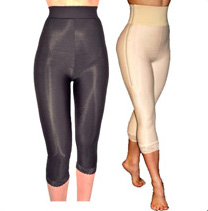Liposuction Surgery
-
Medically Reviewed by Charlie Chen, MD | Last updated 10/18/2023
- Overview
Overview
What is liposuction?
Liposuction is a surgical procedure that aims to remove excess fat deposits from specific areas of the body. It is not a weight-loss method but rather a contouring procedure to enhance the body’s shape and proportions. Some of the most common areas treated include the thighs, hips, buttocks and abdomen.
Cost of liposuction surgery
The average cost of liposuction surgery is $3,637 according to the American Society of Plastic Surgeons (ASPS), however this only includes the surgeon’s fee. There are several other factors that can affect the cost of your procedure. Here are some of the top factors:
- Your Surgeon: The experience and reputation of your liposuction surgeon can affect the cost. Highly skilled plastic surgeons may charge a premium for their services.
- Anesthesia: The type of anesthesia used, procedure duration, and the qualifications of the anesthesiologist can influence the anesthesia fees.
- Surgical Facility: These fees cover the usage of the operating room and other associated services. To ensure a safe experience, check to see if your surgical facility is certified by the Accreditation Associations for Ambulatory Health Care (AAAHC).
- Location Matters: The cost of living and the average pricing for medical services in a particular area can affect the cost of your procedure. In general, urban areas tend to have higher procedure fees. If you want to get a rough idea of the prices for medical procedures in your local area, you can use the Healthcare Blue Book, which functions similarly to Kelley Blue Book for estimating car prices.
- Liposuction Technique Used: Different liposuction techniques may have varying costs.
- Extent of Your Procedure: The number of areas being treated and the amount of fat to be removed can affect the cost. In general, larger areas or multiple areas that require more time and effort will cost more.
- Pre and Postoperative Care: This includes consultations, medical tests, surgical garments, medications, and follow-up appointments.
- Additional Procedures: Your overall cost may be higher if you’re having other procedures performed along with your liposuction, such as a tummy tuck or breast augmentation.
- Insurance: In certain cases, your liposuction surgery may be covered by insurance if it is deemed medically necessary. In these cases, insurance may cover a portion of the procedure if specific criteria is met.
In taking these factors into consideration, the total cost of liposuction can range from $2,000 for small areas to $15,000 for full body.
To get an accurate price quote based on your individual needs, schedule a consultation with a board-certified plastic surgeon near you. This will provide you with an opportunity to discuss your aesthetic goals and obtain better understanding of the specific costs involved.
Average cost per body area
The specific body area being treated can also impact the overall cost. Here is the average cost range for liposuction per body area:
- Abdomen: $3,000 to $7,500.
- Thighs: $2,000 to $6,000 per leg.
- Hips and flanks (love handles): $2,500 to $6,000.
- Arms: $2,000 to $5,000.
- Back: $2,500 to $6,000.
- Neck and chin: $2,500 to $5,000.
It’s important to keep in mind that these are general estimates, and the actual cost can differ based on the several factors. Schedule a consultation with a board certified plastic surgeon who can provide you with a more accurate cost estimate based on your individual situation.
Is the cost covered by insurance?
In most cases, liposuction is not covered by health insurance. Insurance providers usually categorize liposuction as an elective treatment because its primary goal is to enhance body contours rather than address medical issues
There are situations in which liposuction can be considered medically necessary. For example, if a patient is dealing with a medical condition like lipedema, which results in an unusual accumulation of fat in specific body areas, insurance companies might approve liposuction. Similarly, if excess fat deposits are causing functional issues or physical discomfort, insurance providers may consider coverage.
Insurance policies can vary significantly among different providers and plans. Contact your insurance company directly to get the most accurate information about whether your liposuction procedure might be covered.
Is liposuction right for you?
You may be a good candidate for liposuction if you are:
- Healthy and have no major medical issues.
- Between the ages of 30 and 60, although liposuction has been successfully performed on both younger and older patients
- Within 30% of your normal body mass index (BMI).
- Stable weight for six to twelve months prior to surgery.
- Informed about the benefits and risks
- Have good skin elasticity, which helps the body to adapt to its changing contours.
- Non-smoker
- Have realistic expectations
Liposuction surgery can be performed on patients who are overweight but whose weight has been stable over the past several years.
Liposuction is often combined with other procedures to achieve a more desirable outcome. Some procedure commonly performed in conjunction with liposuction include abdominoplasty, breast lift surgery.
Benefits of liposuction
Liposuction is a safe, effective body contouring procedure that offers the following benefits:
- Removes excess fat
- Improves the overall shape of the body
- Reduces the risks of weight-related health issues, such as heart disease and stroke
- Boosts self-confidence
In a study that surveyed 209 liposuction patients, 80% reported being satisfied with their results.
What can’t it do?
Ensuring patients have realistic expectations for their results is a goal plastic surgeons must work towards every day. For whatever reason, liposuction seems to have more misconceptions regarding its abilities than any other cosmetic procedure. In order to dispel some of these myths, these are some of the things liposuction cannot do:
- Tighten loose, sagging skin: The majority of skin laxity, or looseness, present in your body will still remain after the procedure. Many factors can contribute to the loss of skin elasticity, including pregnancy, significant weight fluctuations, and unlucky genetics. Sometimes removing fat from beneath the skin can make this look even worse.
- Remove stretch marks: Stretch marks are basically scars, except they occur in the dermis, the layer of skin under the outermost layer, the epidermis. Once they form they may fade over time, but they won’t fully disappear. Liposuction does nothing to address this.
- Get rid of cellulite: Unsightly cellulite is caused by two factors. The first is the presence of fibers under the skin which pull it down. The second is fat pushing up against the skin. Liposuction can help eradicate some of the fat pushing up against the skin, but can’t do anything at all about the fibers pulling down, causing the distinctive dimpling patterns of cellulite.
- Reduce your weight: Liposuction is not designed as a weight loss procedure, and can’t be used as one. Ideal candidates for the procedure are already close to their ideal weight or at a stable weight. This procedure is ideal for small pockets of fat that bulge and ruin your shape.
Types of liposuction
There are different types of liposuction techniques that can be used to remove excess fat and contour the body. Below are some of the most commonly performed types:
- Traditional Liposuction: Also known as suction-assisted liposuction (SAL), involves the insertion of a thin tube called a cannula into the target area. The cannula is connected to a suction device that helps remove the fat cells. The surgeon manually moves the cannula back and forth to break up the fat deposits before suctioning them out..
- Power-Assisted Liposuction (PAL): Utilizes a vibrating cannula that helps the surgeon break up the fat deposits more efficiently. The vibrating motion of the cannula facilitates the removal of fat cells with less physical effort.
- Ultrasound-Assisted Liposuction (UAL): Utilizes ultrasound energy to liquefy the fat cells before removal. The surgeon uses a special cannula that emits ultrasonic waves into the target area, which breaks down the fat cells, making them easier to remove. UAL is commonly used in areas with dense fat or areas that require more precision.
- Laser-Assisted Liposuction (LAL): Also known as laser liposuction uses laser energy to liquefy the fat cells. The surgeon inserts a thin laser fiber through a small incision, which emits laser energy to target and melt the fat cells. The liquefied fat is then removed using suction.
- Water-Assisted Liposuction (WAL): Also known as water jet liposuction, uses a gentle spray of water to dislodge and remove fat cells. The surgeon uses a fan-shaped jet of water into the target area, which helps loosen the fat cells without damaging the surrounding tissues. The fat cells are then suctioned out along with the water.
The liposuction technique that is used during your procedure is determined by various factors, such as the plastic surgeon’s expertise, amount of fat being removed, and your desired aesthetic results.
What happens during the procedure
The following provides a basic overview of how a typical liposuction procedure is performed:
- Anesthesia: Before the procedure, anesthesia is administered to ensure your comfort during the surgery. Depending on the extent of the liposuction and the surgeon’s preference, you may receive local anesthesia (numbing only the specific treatment area), intravenous sedation (a combination of local anesthesia and medication to relax you), or general anesthesia (you are asleep throughout the procedure).
- Incisions: Once the anesthesia has taken effect, the surgeon will make small incisions in the targeted area. These incisions are typically very small, ranging from a few millimeters to a centimeter in length. The incisions are strategically placed in inconspicuous areas to minimize visible scarring.
- Tumescent technique: To facilitate fat removal, the surgeon injects a tumescent solution into the treatment area. This solution contains a combination of saline (saltwater), local anesthesia, and epinephrine (a drug that helps constrict blood vessels). The tumescent solution helps numb the area, minimize bleeding, and facilitate fat removal.
- Fat removal: A thin, hollow tube called a cannula is inserted through the incisions into the fatty tissue. The surgeon moves the cannula back and forth to break up the fat cells and suction them out. The cannula is connected to a suction device, which provides the necessary suction to remove the fat.
- Sculpt & Contour: The surgeon carefully uses the cannula to sculpt and contour the treated area, creating the desired shape and proportions.
- Closure and compression: Once the fat has been removed, the surgeon will close the incisions using sutures or adhesive strips. Compression garments or bandages may be applied to the treated area to help reduce swelling, promote healing, and provide support to the newly contoured area.
It’s important to note, liposuction is a surgical procedure and there are potential risks involved. It should be performed by an experienced board certified plastic surgeon in an accredited facility to ensure safety and achieve optimal results.
Recovery time

Liposuction Recovery Compression Garments Photo Courtesy of www.NouvelleInc.com
On average, it can take patients up to 3 to 6 months to heal completely following liposuction surgery.
When will you see results?
Results of liposuction will be visible immediately, but postoperative swelling will take a few months to fully subside. The type of liposuction, the treatment area, and the quality of postoperative care all influence how quickly your swelling will resolve. On average, it takes 3-6 months to see your final liposuction results.
How long will your results last?
The the most part, your liposuction results will be permanent unless significant weight changes occur.
Tips for choosing a plastic surgeon
It is important to carefully select your liposuction surgeon. The surgeon you choose can significantly impact your surgical outcome and overall satisfaction. Find a plastic surgeon with extensive experience in performing liposuction procedures. Also, make sure that they are board-certified and affiliated with one or more of the following organizations:
- The American Board of Plastic Surgery
- The American Society of Plastic Surgeons
- The Aesthetic Society
EnhanceMyself.com relies on sources such as professional medical organizations, government agencies, academic institutions, and peer-reviewed scientific journals to write it’s articles. Learn more about how we ensure our content is accurate, in-depth, and unbiased by reading our editorial guidelines.
*Medical Disclaimer: This website does not provide medical advice. Read more.




